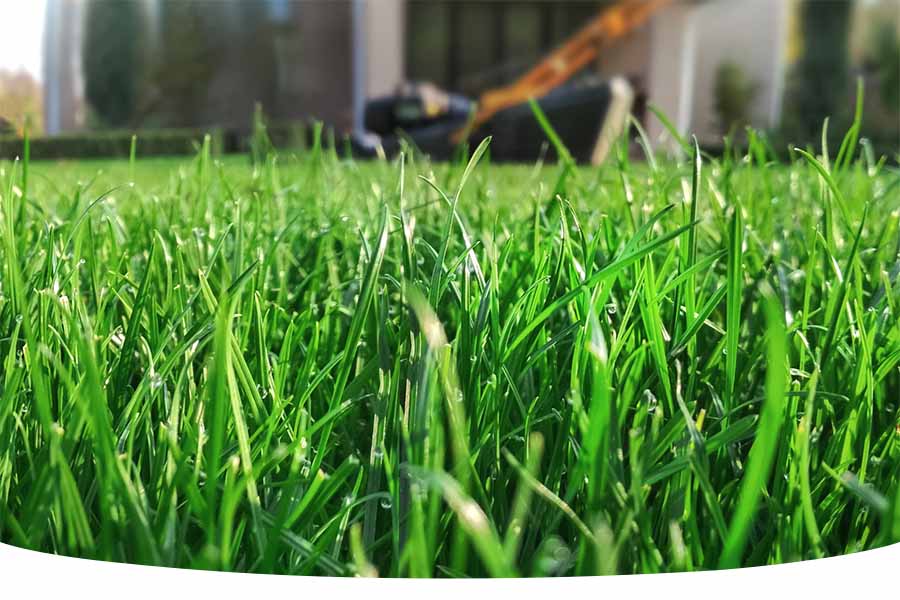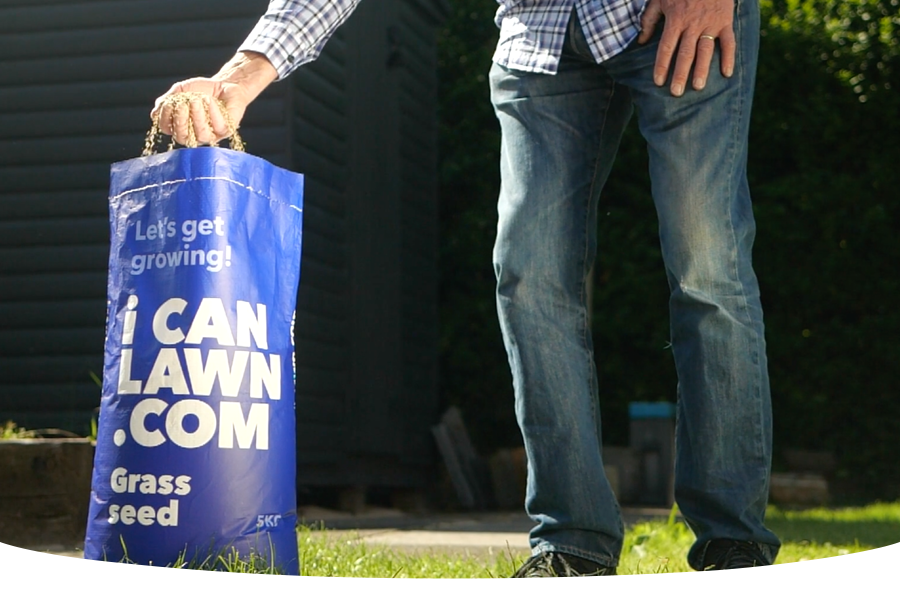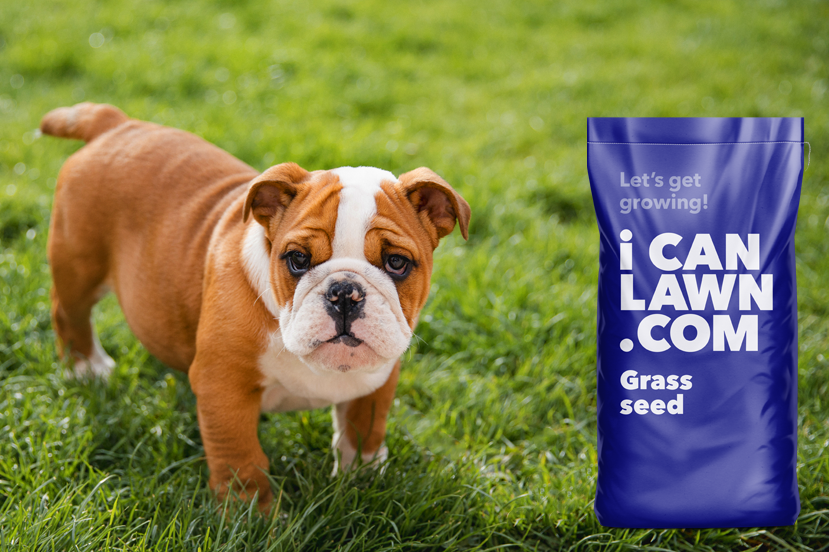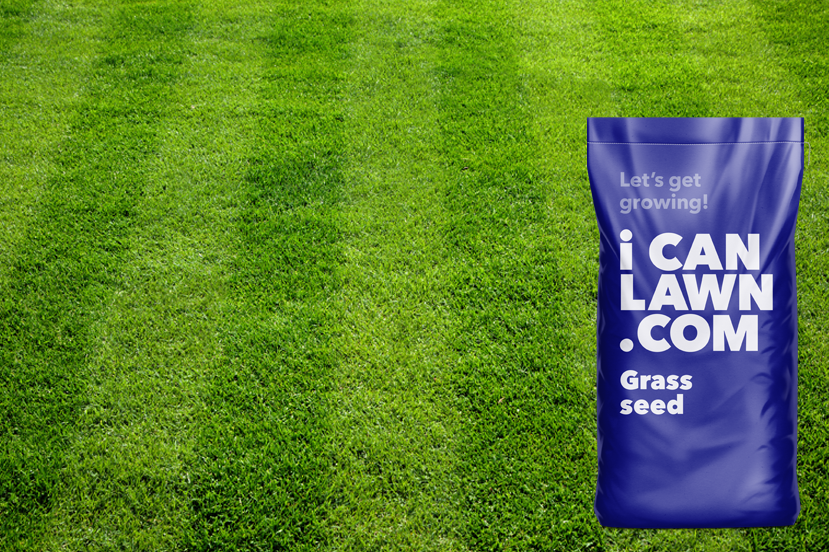How long for grass seed to germinate?
Planting grass seed is a rewarding experience that results in getting the luscious lawn you’ve dreamed of. You’ve been thinking about your beautiful lawn and might wonder, “How long does it take for grass seed to grow?” You’ll be delighted to read that we’ve got all the info you need... Keep reading for advice on how long grass seed takes to germinate and grow in the UK, and we also offer tips to kickstart your lawn-growing journey!
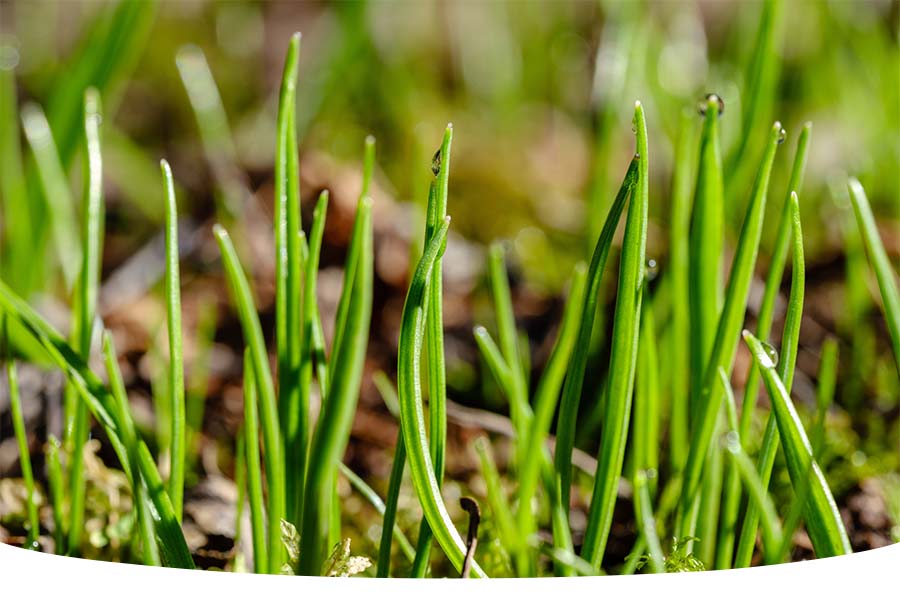
How long does it take for grass seed to germinate and grow?
Your grass seed germination should occur within 7-10 days with the right conditions when using grass seed suited to your garden’s needs. This doesn’t mean it will all grow at once, but rather that the germination process has started, and your lawn is well on its way to becoming lush and green! Keep reading for more detailed advice on how long for grass seed to germinate.
Grass seed germination is like the first chapter in the life of your new grass seeds. It’s when they wake up and start growing, becoming your new lush green garden lawn in the weeks that follow!
How to tell if grass seed is germinating
The most straightforward and obvious way to determine if your lawn seed is germinating is to look for shoots of grass starting to push up through the soil. If you can see grass appearing on the surface, you know your grass seed is germinating successfully.
As mentioned, germination usually takes around 7-10 days, and you should see grass shoots by day 10 after sowing. However, if you do not see any grass appearing after two weeks, then there may be something limiting the growth of your seedlings, and you will need to look at the growing conditions of your lawn. Luckily for you, we’re here to help - so keep reading our expert advice to ensure your grass seed germinates...
Sowing Your Seed at the Right Time
To ensure the conditions for growing are right, you should look at your local weather forecast for temperatures of 10°C and up for two weeks, and then sow your grass seed correctly in the right areas of your garden. In the UK, each season offers unique advantages for sowing seeds and grass seed germination.
Sowing Grass Seed for Spring Germination
Spring creates the ideal environment for germinating grass seeds. This season brings rising temperatures, more frequent appearances of the sun’s rays, and reliable rain showers; it provides the perfect weather conditions for your new grass seedlings!
Sowing Grass Seed in Summer
Sowing grass seed during the summer requires a bit more effort, but it can provide quick results if done correctly. Higher temperatures demand extra care for the young seedlings but don’t be tempted to sow when it’s very hot outside or during a heatwave.
The abundance of sunlight during summer encourages rapid growth once the grass sprouts from the ground – your grass seed will germinate and grow well if you avoid planting in very warm temperatures (20°C +) and keep your soil damp. But be aware of approaching heatwaves, as they often mean there will be a hosepipe ban, so remember to water your lawn accordingly during these times!
Autumn Grass Seed Germination
Autumn is the perfect time for planting grass seeds, and many gardeners agree! As summer comes to a close and temperatures gradually return to normal, early autumn emerges as one of the best times to sow grass seed in the UK. The milder climate, soil that’s still warm from summer and light rain showers provide an optimal setting for successfully establishing grass seedlings.
What grass seed do I need?
Ensuring you get the right grass seed mix for the growing conditions of your garden means your lawn will grow as best it can and be beautifully green and lush all year round. Below, you can find brief breakdowns of the benefits of our grass seed mixes and how they can help you achieve the lawn of your dreams!
Fast Grow Family Lawn
- Our Fast Grow Family Lawn is your top contender if your garden sees a lot of use from family gatherings, BBQs, kids playing and general wear and tear. This hard-wearing grass seed mix is expertly blended to provide a vibrantly green lawn all year round.
All Rounder Rapid Lawn
- All Rounder Rapid Lawn is a fast-growing seed mix that offers resilience to wear and tear while providing a balanced blend of fast growth, thickness and all-year-round durability.
New Build Dream Lawn
- Our New Build Dream Lawn grows exceptionally well in clay soil conditions and is ideal for new-build houses and properties with clay soil in their gardens! This seed mix is also very durable and hard-wearing, making it perfect for busy garden lawns that get a lot of footfall throughout the year.
Tough Stuff Lush Lawn
- Tough Stuff Lush Lawn was created to help you achieve the lush lawn you’ve always when you have pets zooming around your garden and digging up your grass. Dogs can make maintaining the perfect lawn seem daunting, but this hard-wearing grass seed mix is up to the challenge - it recovers quickly from wear and tear to overcome every scrape, skid and pothole caused by your pets!
Shade Supreme Lawn
- Ideal for gardens surrounded by large trees, high walls and looming hedgerows that block sunlight from getting to your grass. Our Shade Supreme Lawn mix features grass seeds that thrive in the shade and ensure your lawn grows well in all corners of your garden!
Super Fine Luxury Lawn
- Super Fine Luxury Lawn is the perfect seed mix if you want an ornamental lawn in your garden. This luxury seed blend is created using fine grass seeds that can be mowed super low once they have germinated and grown to the right height. It grows well in sandy, drought-stricken soils and is the perfect choice if you want to mow statement stripes into your lawn!
Tips for grass seed germination
Our tips below offer advice to make your grass seed germinate and get off to the right start!
Preparing your soil for germination
- Get your soil in shape by preparing the perfect seedbed for your new seeds. Start by removing weeds, rocks and stones – and give your soil a feed of Pre-Seed Lawn Food if your soil is low in nutrients.
Perfect Conditions for Grass Seed Germination
- Sow your seeds in the right conditions for them to grow. Spring and autumn are arguably the best times to plant grass seed since the temperatures are at least 10 °C day and night, and there is often enough rainfall to do most of the watering for you.
Water Your Grass to Keep the Soil Moist
- Keep your soil moist, but don’t go crazy. Your seeds need water from the moment you sow them into the soil, but be aware that too much water can be just as bad as not watering them at all! We recommend watering your new lawn every day for the first six weeks to help your grass seed to germinate as best it can. You can hold off watering on days when it rains outside, and after this time, your grass should be getting close to being long enough for its first mow.
Protect Your Seedlings While They Germinate
- After all your hard work up to this point, the last thing you want is your grass seeds to be snatched away by birds. So, cover your newly seeded area with netting or hang old CDs around your garden to stop birds from undoing all your hard work!
Time for Your New Lawn’s First Mow
- After giving your seedlings at least six weeks to germinate and establish, your lawn will be ready for its first mow. The first mow needs to be done using your mower’s highest setting; then, you can gradually drop to the recommended height for your type of lawn: 20 - 40mm for a family lawn and 10 - 20mm for an ornamental one.
Knowing how long for grass seed to germinate
You’re on your way to having a stunning garden lawn! Knowing how grass seed grows and what affects its germination time sets you up for success. So, get the right seeds, water like a pro, and remember – patience pays off! Soon enough, you’ll have a beautiful, green, and envy-worthy garden lawn.
For further reading, we have guides to help ensure your garden lawn grows as well as you have hoped:
- How to choose the best grass seed
- How to sow grass seed
- “Why isn’t my grass growing?”
- When to use lawn feed
- We also have a page devoted to helping you control weeds that may appear on your newly seeded lawn!




